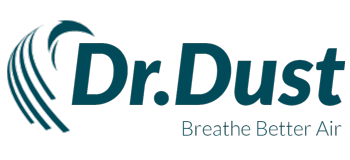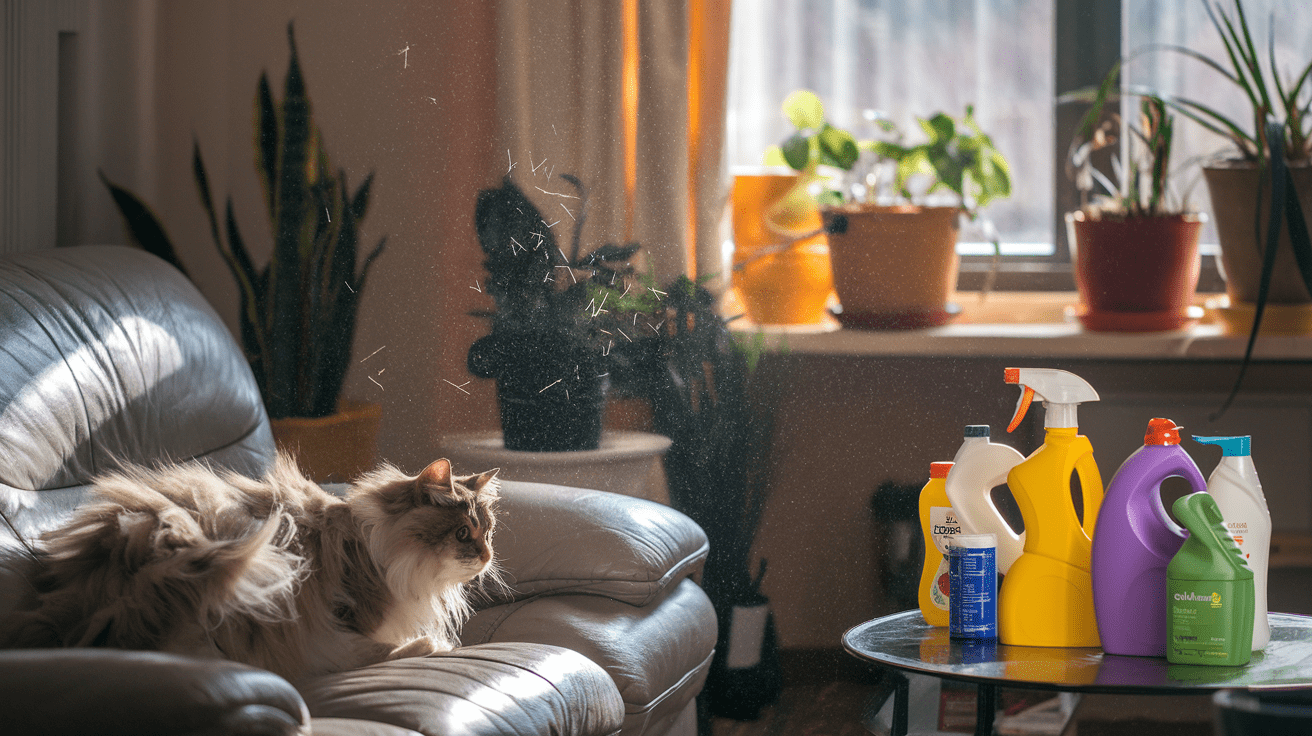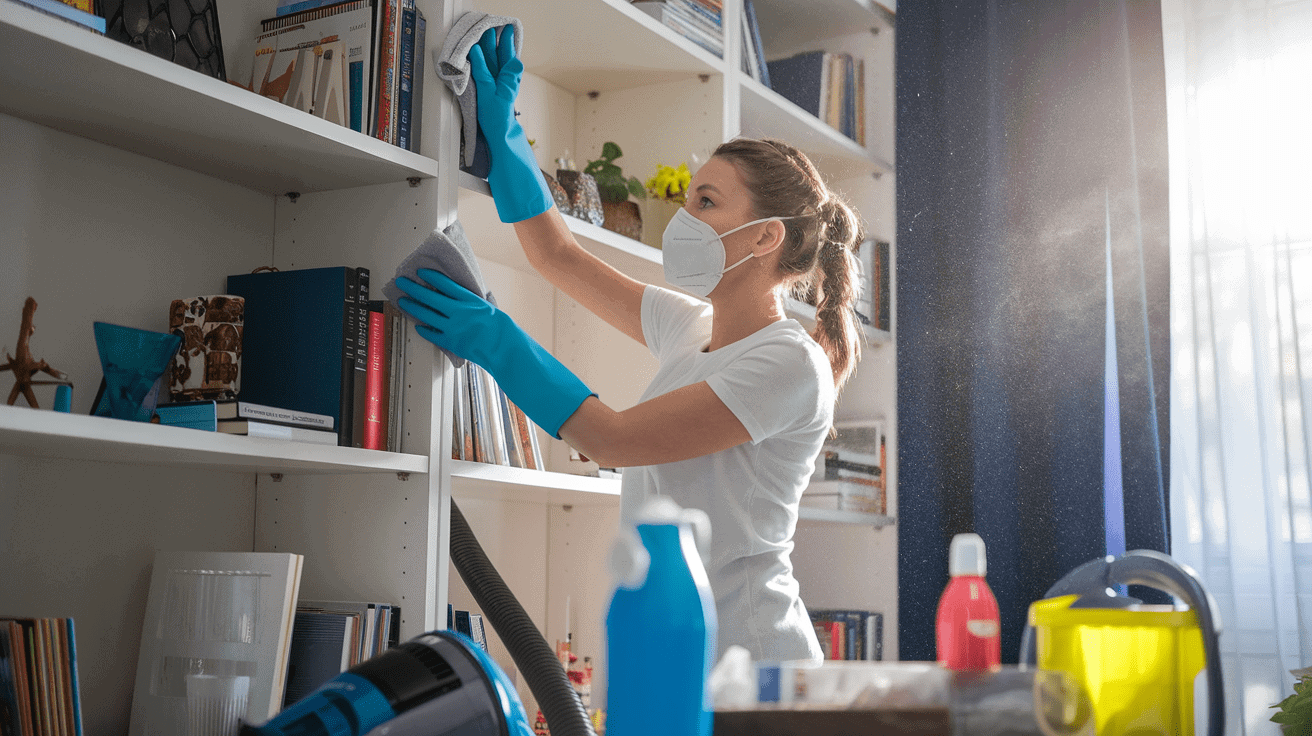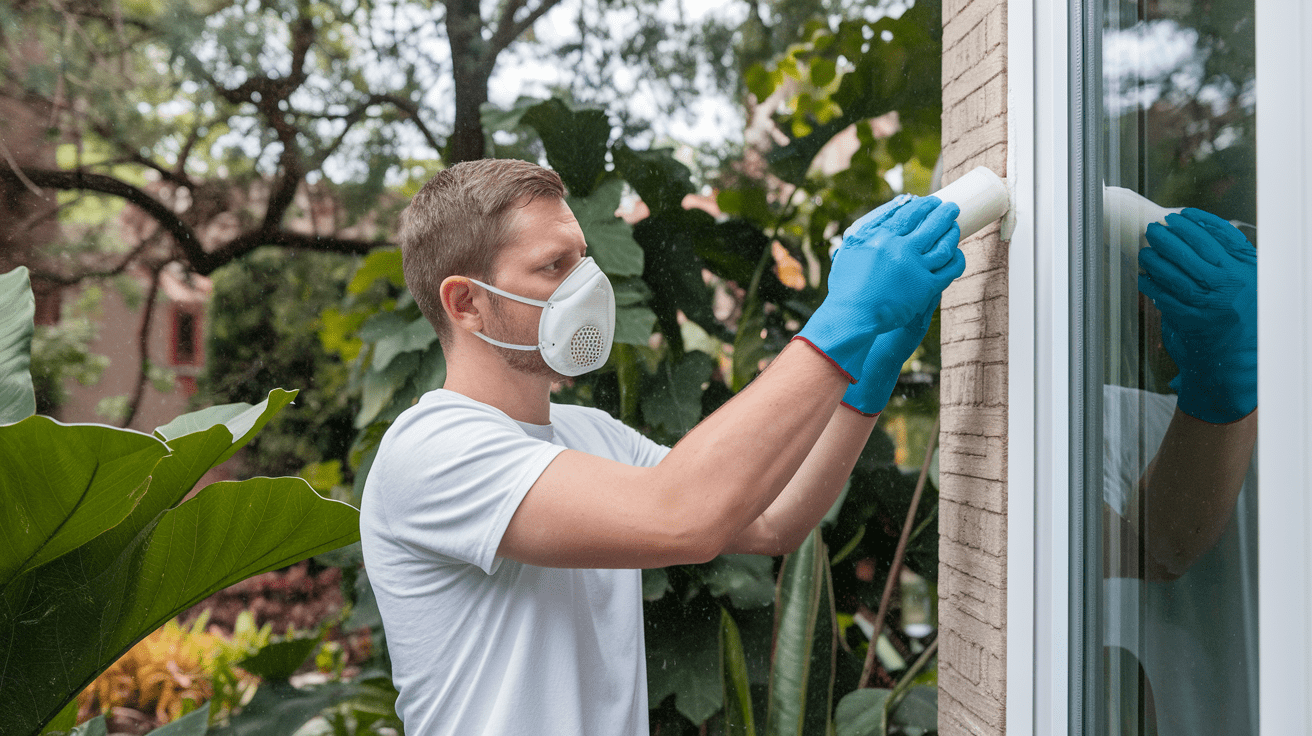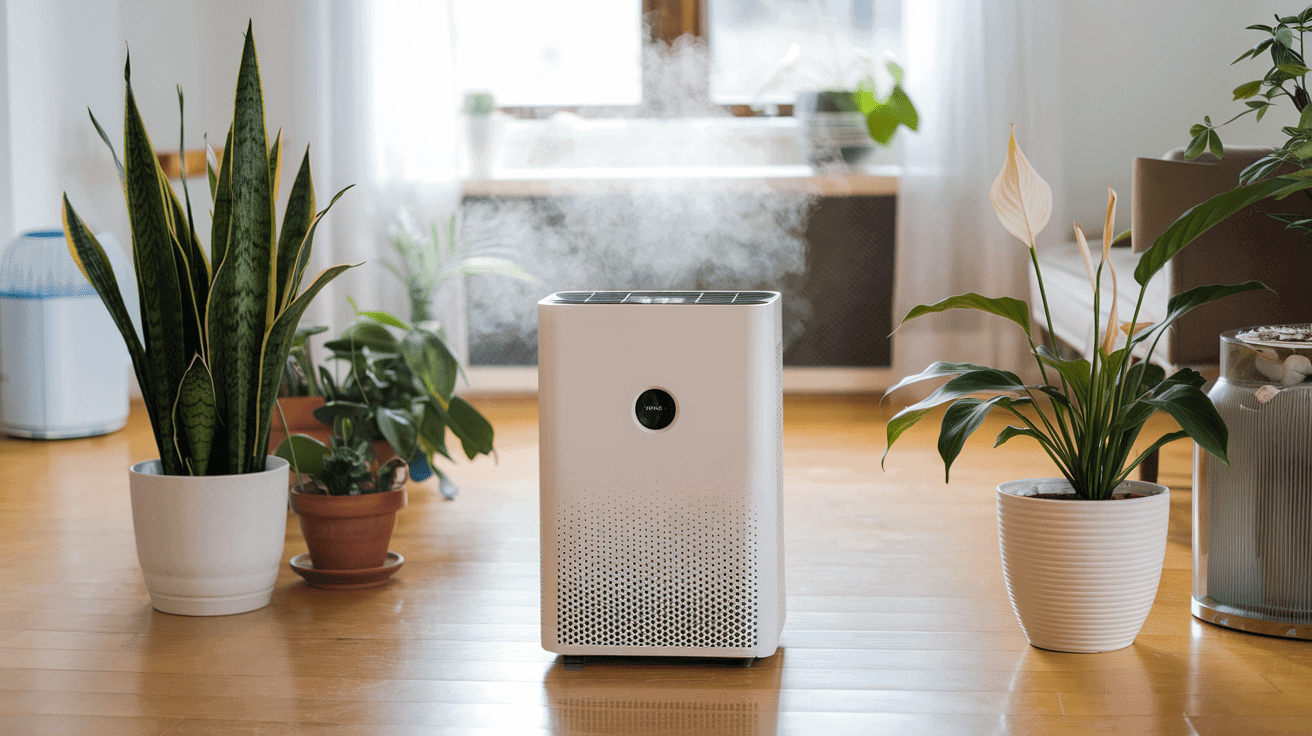Are you tired of constant sneezing, itchy eyes, and runny noses within the comfort of your own home? 🤧 You’re not alone. Millions of people struggle with indoor allergies, unaware that their sanctuary might be harboring numerous allergens. But what if you could transform your home into an allergy-free haven?
Imagine waking up every morning feeling refreshed, breathing easily, and enjoying your living space without the constant worry of allergic reactions. It’s not just a dream – it’s entirely possible! By understanding the common culprits and implementing smart strategies, you can dramatically reduce allergens in your home. From dust mites hiding in your bedding to pet dander lurking on your furniture, we’ll explore how to tackle these invisible irritants head-on.
In this comprehensive guide, we’ll walk you through four essential steps to create a cleaner, healthier home environment. You’ll learn how to identify common household allergens, implement effective cleaning strategies, maintain outdoor allergen barriers, and utilize natural allergen reducers. Get ready to take control of your indoor air quality and breathe easier than ever before!
Identify Common Household Allergens
Dust mites and their habitats
Dust mites are microscopic creatures that thrive in warm, humid environments and feed on dead skin cells. These tiny pests are one of the most common household allergens and can be found in various places throughout your home. Here are the primary habitats where dust mites tend to congregate:
- Bedding (mattresses, pillows, and sheets)
- Upholstered furniture
- Carpets and rugs
- Curtains and drapes
- Stuffed toys
To effectively combat dust mites, it’s crucial to focus on these areas during your cleaning routine. Regular washing of bedding in hot water (at least 130°F) and using allergen-proof covers for mattresses and pillows can significantly reduce dust mite populations.
Pet dander sources
Pet dander, consisting of tiny flakes of skin shed by animals, is another major allergen found in many homes. While it’s commonly associated with cats and dogs, any pet with fur or feathers can contribute to dander in your living space. Here are the main sources of pet dander:
| Source | Description |
|---|---|
| Fur/hair | Loose hair shed by pets |
| Skin | Microscopic flakes of dead skin |
| Saliva | Dried saliva from grooming |
| Urine | Dried urine particles |
To minimize pet dander, regular grooming, vacuuming, and air filtration are essential. Consider using HEPA filters in your vacuum cleaner and air purifiers to trap these tiny particles effectively.
Mold and mildew hotspots
Mold and mildew thrive in damp, humid environments and can cause significant allergic reactions. Identifying and addressing these hotspots is crucial for maintaining a healthy home environment. Common areas where mold and mildew tend to grow include:
- Bathrooms (especially shower curtains and grout)
- Kitchens (under sinks and around appliances)
- Basements and crawl spaces
- Window sills and frames
- Air conditioning units and humidifiers
Regular inspection and cleaning of these areas, along with proper ventilation and moisture control, can help prevent mold growth and reduce related allergens in your home.
Pollen entry points
While pollen is primarily an outdoor allergen, it can easily find its way into your home through various entry points. Understanding these pathways can help you better control pollen levels indoors:
- Windows and doors
- Ventilation systems
- Clothing and shoes
- Pets (fur can trap pollen)
To minimize pollen intrusion, consider keeping windows closed during high pollen count days, using air purifiers with HEPA filters, and implementing a “shoes off” policy in your home. Additionally, wiping down pets after outdoor activities can help reduce the amount of pollen they bring inside.
By identifying these common household allergens and their sources, you can take targeted steps to reduce their presence in your home. This knowledge forms the foundation for implementing effective cleaning strategies and maintaining a healthier, allergy-friendly living environment. In the next section, we’ll explore specific cleaning techniques to combat these allergens and improve your indoor air quality.
Implement Effective Cleaning Strategies
HEPA vacuum cleaning techniques
When it comes to effective allergen removal, HEPA (High-Efficiency Particulate Air) vacuum cleaners are your best allies. These powerful machines can trap 99.97% of particles as small as 0.3 microns, including common allergens like dust mites, pollen, and pet dander.
To maximize the effectiveness of your HEPA vacuum:
- Vacuum slowly and thoroughly, making multiple passes over each area
- Pay extra attention to high-traffic zones and areas near furniture
- Use attachments to clean upholstery, curtains, and hard-to-reach corners
- Empty the vacuum bag or canister outside to prevent allergens from re-entering your home
Damp dusting for allergen removal
Dry dusting can often spread allergens rather than remove them. Instead, opt for damp dusting techniques:
- Use microfiber cloths slightly dampened with water or an allergen-reducing solution
- Wipe surfaces from top to bottom to prevent allergens from settling on already cleaned areas
- Pay special attention to frequently touched surfaces like doorknobs, light switches, and countertops
Washing bedding in hot water
Your bed can be a hotspot for allergens, especially dust mites. To combat this:
- Wash bedding weekly in hot water (at least 130°F or 54°C)
- Use hypoallergenic detergents to avoid introducing new irritants
- Consider using allergen-proof mattress and pillow covers
| Item | Washing Frequency | Water Temperature |
|---|---|---|
| Sheets | Weekly | 130°F (54°C) |
| Pillowcases | Weekly | 130°F (54°C) |
| Comforters | Monthly | 130°F (54°C) |
| Mattress covers | Monthly | 130°F (54°C) |
Steam cleaning carpets and upholstery
Steam cleaning is an excellent way to deep clean carpets and upholstery while eliminating allergens:
- Use a steam cleaner with a temperature of at least 200°F (93°C)
- Focus on high-traffic areas and spots where pets frequently rest
- Allow carpets and upholstery to dry completely to prevent mold growth
For best results, consider professional steam cleaning services every 6-12 months, especially if you have severe allergies.
Air purifier placement and maintenance
Air purifiers can significantly improve indoor air quality by removing airborne allergens. To optimize their performance:
- Place air purifiers in rooms where you spend the most time, such as bedrooms and living areas
- Keep doors and windows closed when running air purifiers
- Replace filters according to the manufacturer’s recommendations
- Clean the exterior of the purifier regularly to prevent dust buildup
Remember to maintain your home’s HVAC system as well. Regular air duct cleaning can help reduce the circulation of allergens throughout your home. If you’re in the Altamonte Springs or Orlando area, consider professional air duct cleaning services to ensure thorough allergen removal from your ventilation system.
By implementing these effective cleaning strategies, you’ll create a healthier, allergen-reduced environment in your home. Next, we’ll explore how to maintain outdoor allergen barriers to further protect your indoor spaces from external allergen sources.
Maintain Outdoor Allergen Barriers
Keep windows closed during high pollen days
Maintaining a barrier against outdoor allergens is crucial for creating an allergy-free environment in your home. One of the most effective ways to do this is by keeping your windows closed during high pollen days. Pollen counts are typically highest in the early morning and late afternoon, so it’s especially important to keep windows shut during these times.
To stay informed about pollen levels in your area, consider using a weather app or website that provides daily pollen forecasts. This will help you plan accordingly and take necessary precautions.
Use door mats to trap outdoor allergens
Door mats serve as your first line of defense against outdoor allergens. Place high-quality mats both outside and inside your entryways to effectively trap allergens before they enter your home.
| Mat Type | Placement | Benefits |
|---|---|---|
| Coarse fiber mat | Outside | Removes large particles and debris |
| Microfiber mat | Inside | Traps fine particles and absorbs moisture |
Remember to clean these mats regularly to prevent the accumulation of allergens. Vacuum or shake out outdoor mats daily, and wash indoor mats weekly in hot water to eliminate trapped allergens.
Change clothes after outdoor activities
After spending time outdoors, especially during high pollen seasons, it’s important to change your clothes as soon as you enter your home. This simple habit can significantly reduce the amount of allergens you bring indoors.
- Remove shoes before entering the house
- Change into clean, indoor-only clothing
- Store outdoor clothes in a designated area away from living spaces
- Wash outdoor clothes separately from indoor clothes
Groom pets regularly
Pets can be major carriers of outdoor allergens, bringing them into your home on their fur and paws. Regular grooming is essential to minimize this transfer of allergens.
- Brush your pets outdoors daily to remove loose fur and trapped allergens
- Wipe your pet’s paws with a damp cloth before they enter the house
- Bathe pets weekly using a pet-friendly, hypoallergenic shampoo
- Keep pets out of bedrooms and off furniture to reduce allergen spread
By implementing these strategies, you can create a strong barrier against outdoor allergens and significantly improve the air quality in your home. This proactive approach to allergen control can help reduce allergy symptoms and create a more comfortable living environment for you and your family.
Now that we’ve covered how to maintain outdoor allergen barriers, let’s explore some natural allergen reducers that can further improve your home’s air quality.
Utilize Natural Allergen Reducers
Incorporate air-purifying plants
Nature provides us with powerful allies in our quest to reduce allergens at home. Certain plants act as natural air purifiers, effectively removing pollutants and allergens from the air. Here are some top choices for air-purifying plants:
- Spider Plant (Chlorophytum comosum)
- Snake Plant (Sansevieria trifasciata)
- Peace Lily (Spathiphyllum)
- Boston Fern (Nephrolepis exaltata)
- Bamboo Palm (Chamaedorea seifrizii)
These plants not only add a touch of greenery to your home but also work tirelessly to improve indoor air quality. For optimal results, place these plants strategically around your living spaces, especially in areas where you spend most of your time.
| Plant Name | Allergens Removed | Maintenance Level |
|---|---|---|
| Spider Plant | Formaldehyde, Xylene | Low |
| Snake Plant | Benzene, Trichloroethylene | Very Low |
| Peace Lily | Ammonia, Benzene, Formaldehyde | Medium |
| Boston Fern | Formaldehyde, Xylene | High |
| Bamboo Palm | Formaldehyde, Benzene | Medium |
Use essential oils with anti-allergenic properties
Essential oils offer a natural and aromatic way to combat allergens in your home. Many essential oils possess anti-allergenic, anti-inflammatory, and antimicrobial properties that can help alleviate allergy symptoms and purify the air. Here are some effective essential oils for allergen reduction:
- Eucalyptus: Known for its ability to clear airways and reduce inflammation
- Peppermint: Helps relieve nasal congestion and respiratory issues
- Tea Tree: Possesses powerful antimicrobial properties
- Lavender: Reduces inflammation and promotes relaxation
- Lemon: Acts as a natural air purifier and boosts immune function
To use these essential oils, you can add a few drops to a diffuser, create a natural cleaning spray, or mix with a carrier oil for topical application. Always follow proper dilution guidelines and consult with a healthcare professional before use, especially if you have sensitive skin or respiratory conditions.
Try salt lamps for air ionization
Himalayan salt lamps have gained popularity as natural air purifiers and allergen reducers. While scientific evidence is limited, many people report benefits from using these lamps in their homes. Salt lamps are believed to work through the process of hygroscopy, where they attract water molecules from the air along with any allergens or pollutants those molecules may be carrying.
When heated by the lamp’s bulb, the salt releases negative ions into the air. These negative ions are thought to neutralize positive ions associated with allergens and pollutants, potentially improving air quality and reducing allergy symptoms.
To maximize the potential benefits of salt lamps:
- Place them in areas where you spend the most time
- Keep them on for extended periods
- Clean them regularly to maintain their effectiveness
While incorporating these natural allergen reducers can significantly improve your home’s air quality, it’s important to remember that they work best in conjunction with regular cleaning and maintenance. By combining these natural methods with thorough cleaning practices and proper ventilation, you can create a healthier, allergen-reduced living environment.
Removing allergens from your home is a crucial step in creating a healthier living environment. By identifying common household allergens, implementing effective cleaning strategies, maintaining outdoor allergen barriers, and utilizing natural allergen reducers, you can significantly reduce allergy symptoms and improve overall indoor air quality.
Take action today to make your home an allergen-free sanctuary. Start by thoroughly cleaning and decluttering, investing in high-quality air purifiers, and regularly washing bedding and upholstery. Remember, consistency is key in maintaining an allergen-reduced home. With these steps, you’ll be breathing easier and enjoying a more comfortable living space in no time.
